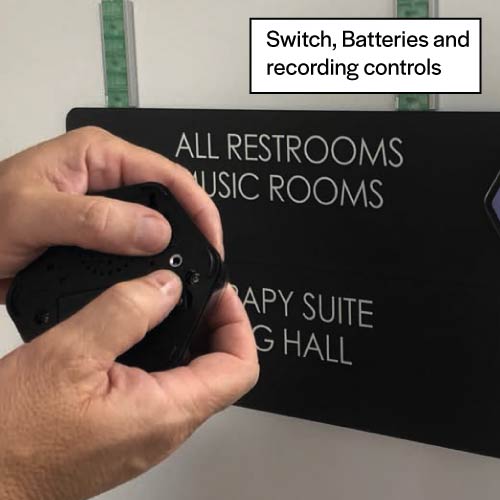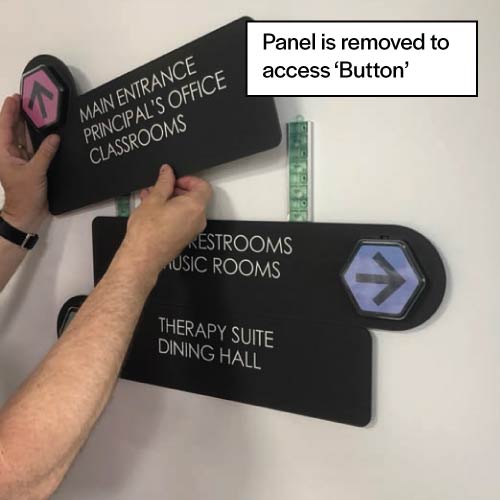Implementing audio signs into a wayfinding strategy scheme can significantly enhance the accessibility and inclusivity for everyone who uses that environment.
In this guide, we share the principles of accessible wayfinding signage and introduce our innovative Talky™ Signs that are transforming how people navigate different spaces, from hospitals to hotels.
What Is Accessible Wayfinding?
Accessible wayfinding refers to the strategic design and placement of signs to guide individuals through a physical environment efficiently. Unlike traditional signage, accessible wayfinding actively acknowledges, and caters for, the diverse needs of all users, including those with visual, auditory, and cognitive impairments.
The key elements of accessible wayfinding signage include:
Clear Visuals. Use high-contrast colours, large, easy-to-read fonts, and combinations of colours, shapes, and texts to increase readability.
Tactile Elements. Signs can be made to incorporate braille and raised letters to assist visually impaired individuals. Although only about 7% of people with sight loss read braille, including tactile maps to wayfinding signage strategies can help anyone with any degree of visual impairment understand their environment.
Consistent Symbols. Ensuring that, where possible, each signage scheme uses standardised or universally recognisable icons to help users recognise and understand the information quickly, including pictograms. It’s important that no matter the scale of a signage project, there is a standard look applied.
Auditory Cues. Audible alarms and messages provide guidance for those with visual impairments or who may be unaware of their surroundings. Audio signs are helpful for explaining where abouts a user is, what is in their surroundings, and give them directions, all in different languages.
For a comprehensive guide on designing excellent wayfinding signage, you can refer to our two part series how to design excellent wayfinding signage and creating the most effective wayfinding signage.

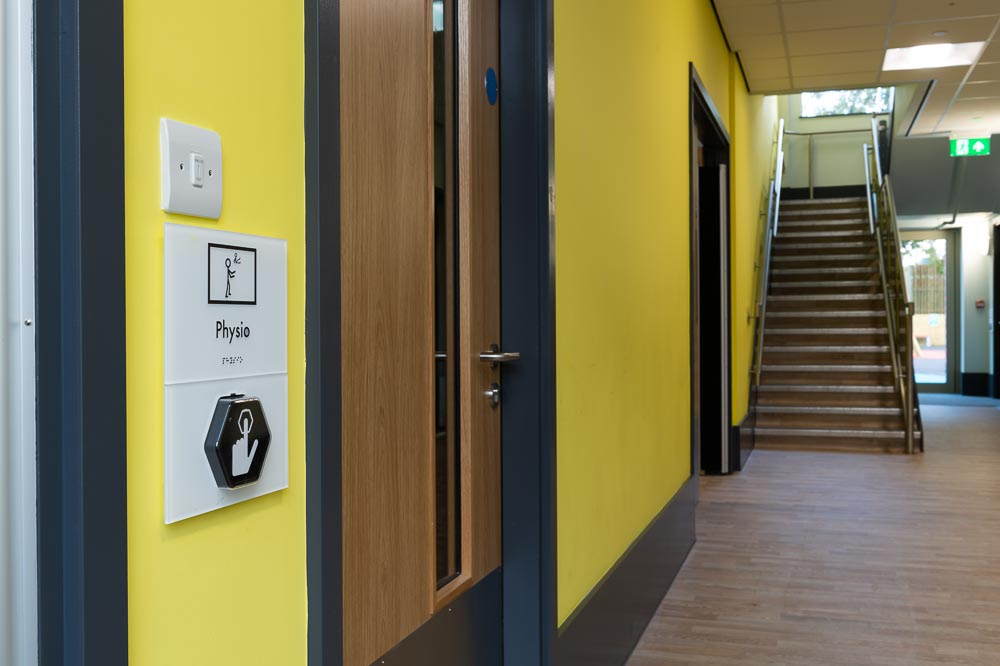
What Are talky™ Signs?
talky™ by xsign are a groundbreaking addition to accessible wayfinding solutions. These signs are equipped with audio playback devices that can store and play pre-recorded messages, offering an auditory layer of navigation assistance.
There are several exciting features of our talky™ audio signs to share:
Pre-recorded Messages. Customisable audio messages guide users through a space, making navigation easier and safer for visually impaired individuals. A microphone allows up to 80 seconds of recording or audio files can be imported through a line-in mini jack.
User Friendly and Easy Installation. Designed for straightforward integration into existing signage schemes, including our puzzle™ paper insert signs and jigsaw™ directional signage, talky™ signs are flexible and convenient. The batteries last for a year but can easily be replaced by accessing the back of each talky™ module.
Hard-wearing Design. talky™ are engineered to withstand various environmental conditions and consistent tactile use, ensuring longevity and reliability.
Range of Customisation Options. As well as ensuring the audio messages can be tailored to fit specific locations and needs, talky™ can be partnered with xsign’s state of the art 3D print technology and creative designs to enhance the user experience.
Battery-operated or Mains-powered. Both options offer flexibility depending on the installation requirements.
Suitable for All Environments. From primary schools to universities, office complexes to residential buildings, there is no interior space that talky™ isn’t appropriate for.
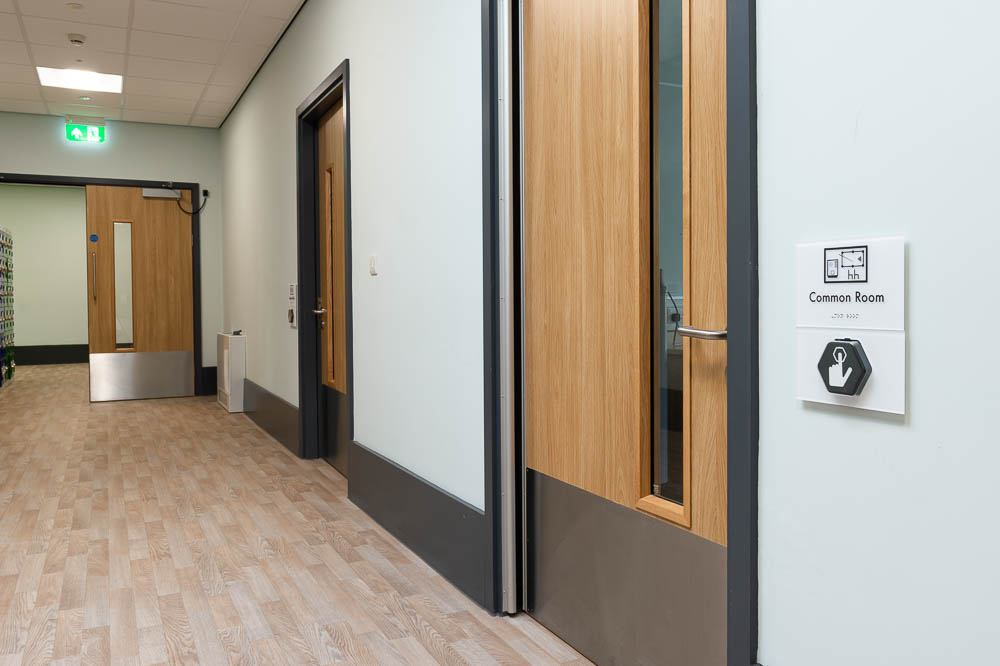
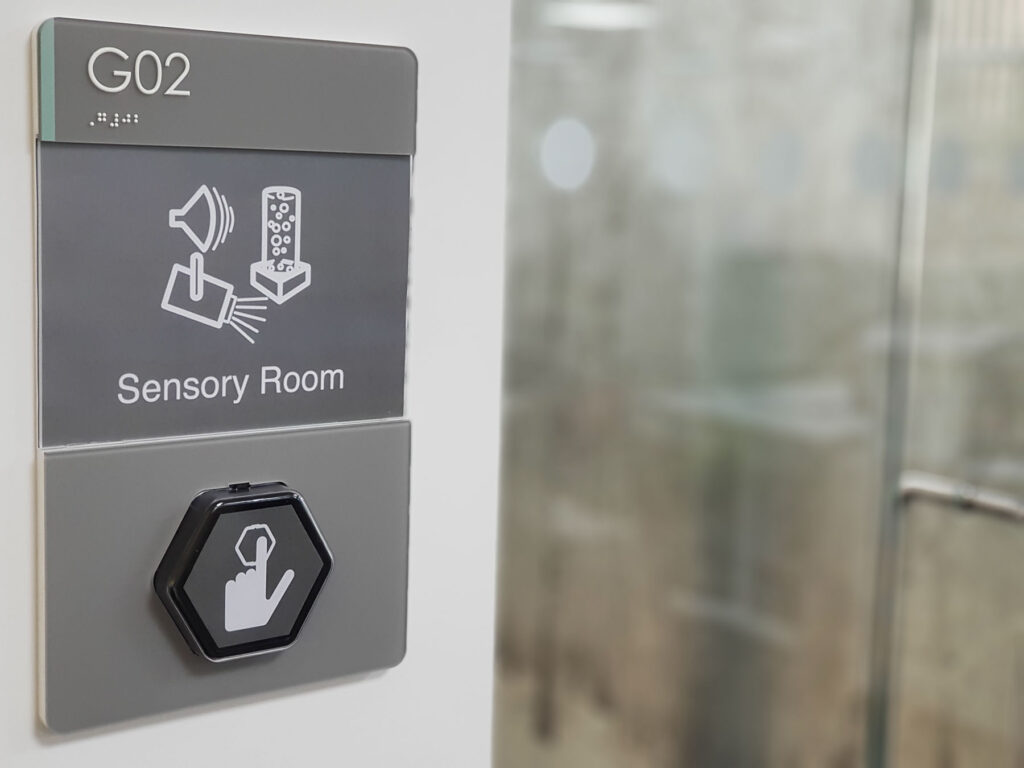
Benefits of Accessible Wayfinding with talky™ Audio Signs
Incorporated talky™ audio signs into your wayfinding signage scheme provides numerous benefits:
Enhanced Accessibility. talky™ make navigation simpler and more intuitive for all users, particularly those with visual impairments.
Increased Inclusivity. By addressing the needs of diverse user groups, your building or space becomes more welcoming and inclusive.
Improved User Experience. Clear and multi-sensory wayfinding solutions reduce confusion and stress, improving the overall experience for visitors.
Compliance with Regulations. Using accessible wayfinding signage helps ensure compliance with accessibility standards and regulations.
Implementing talky™ audio signs in your wayfinding signage scheme can dramatically improve the accessibility and inclusivity of your space. By catering to the diverse needs of all users, you not only enhance the user experience but also underscore your commitment to inclusive design.
Explore more about talky™ signs for your signage project and discover how this innovative solution can revolutionise your accessible wayfinding strategy.
